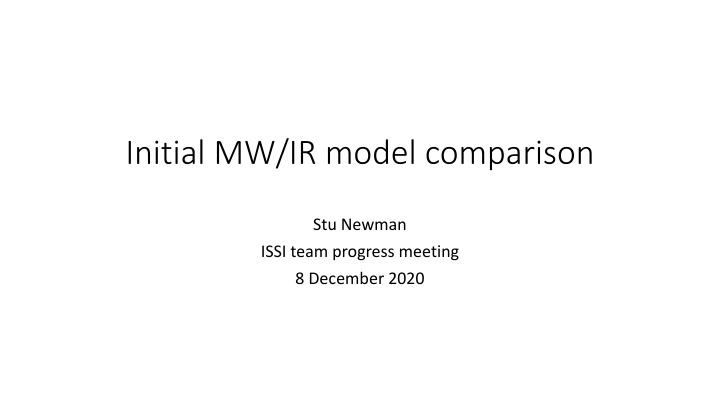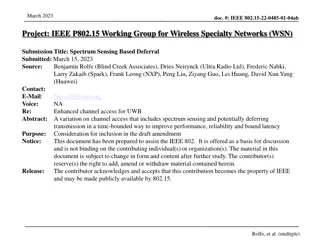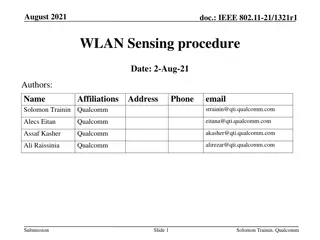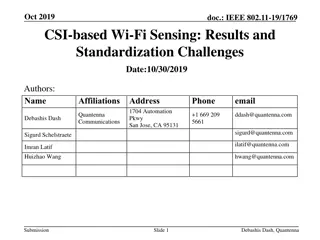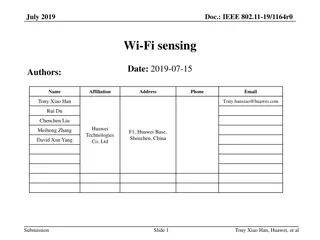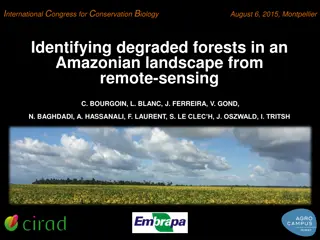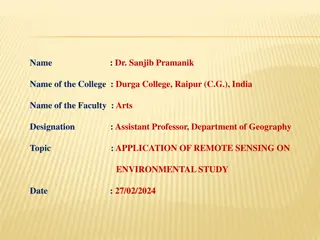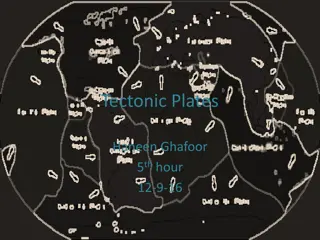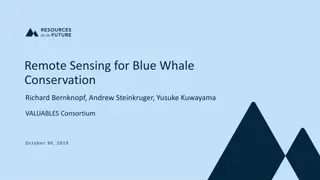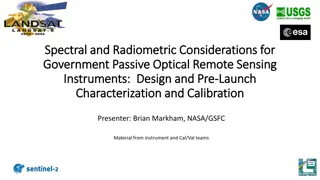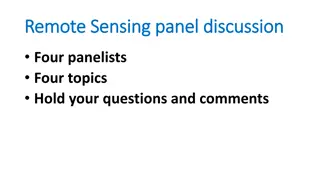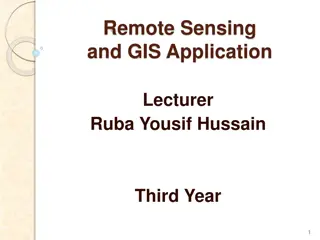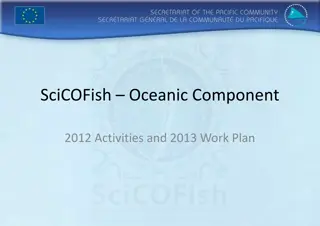Comparing MW/IR Model Variations for Oceanic Remote Sensing
In a recent team meeting on December 8, 2020, various models were discussed for microwave and infrared remote sensing of ocean properties. The presentation covered details on ocean reference models, dielectric properties, sea spectrum, and more. Challenges in extending IR dielectric properties were highlighted, along with suggestions for model comparisons and future steps. Explore the complexities of modeling oceanic properties for remote sensing applications, considering spectral coverage, frequency range, and consistency between microwave and IR properties.
Download Presentation

Please find below an Image/Link to download the presentation.
The content on the website is provided AS IS for your information and personal use only. It may not be sold, licensed, or shared on other websites without obtaining consent from the author.If you encounter any issues during the download, it is possible that the publisher has removed the file from their server.
You are allowed to download the files provided on this website for personal or commercial use, subject to the condition that they are used lawfully. All files are the property of their respective owners.
The content on the website is provided AS IS for your information and personal use only. It may not be sold, licensed, or shared on other websites without obtaining consent from the author.
E N D
Presentation Transcript
Initial MW/IR model comparison Stu Newman ISSI team progress meeting 8 December 2020
Summary of models: Ocean reference model (E. Dinnat) IREMIS in RTTOV (J. Hocking, M. Matricardi) Dielectric properties Klein & Swift (1977) or Ellison (1998) Hale & Querry (1973) Pinkley & Williams (1976) Newman et al. (2005) Geometric optics (large scales, slope variance) Cox & Munk (1954); or Elfouhaily (1997), Durden & Vesecky (1985) sea spectrum Masuda (2006) including multiple reflections Cox & Munk (1954) or Ebuchi & Kizu (2002) Bragg scattering (small scales) Foam Small perturbation method (two scale model) e.g. Monahan (1986) or other options for fraction; Stogryn (1972) emissivity None
The complex dielectric constant of pure and sea water from microwave satellite observations T. Meissner; F.J. Wentz (2004)
40 incidence angle 12 m/s wind speed SST = 25 C SSS = 36 Klein & Swift (1977) dielectric properties Durden & Vesecky sea spectrum Monahan (1986) foam fraction Stogryn (1972) foam emissivity Two-scale cutoff wavenumber(s) (rad/m) [Used 2*pi/wavelength/N with N = 5]
Summary In IR we have limited data on temperature and salinity dependence of water optical properties (preferably with uncertainty estimates) Consider how to extend IR dielectric properties consistent with MW dielectric properties for full spectral coverage (Hale & Querry data baseline in the IR) Issue of frequency range of applicability for single/double Debye models in MW Consider appropriate two-scale cutoff wavenumber for extended spectral range in reference model Next steps: compare E. Dinnat s model with IREMIS for common inputs (same dielectric properties, same [Cox & Munk] slope distribution)
